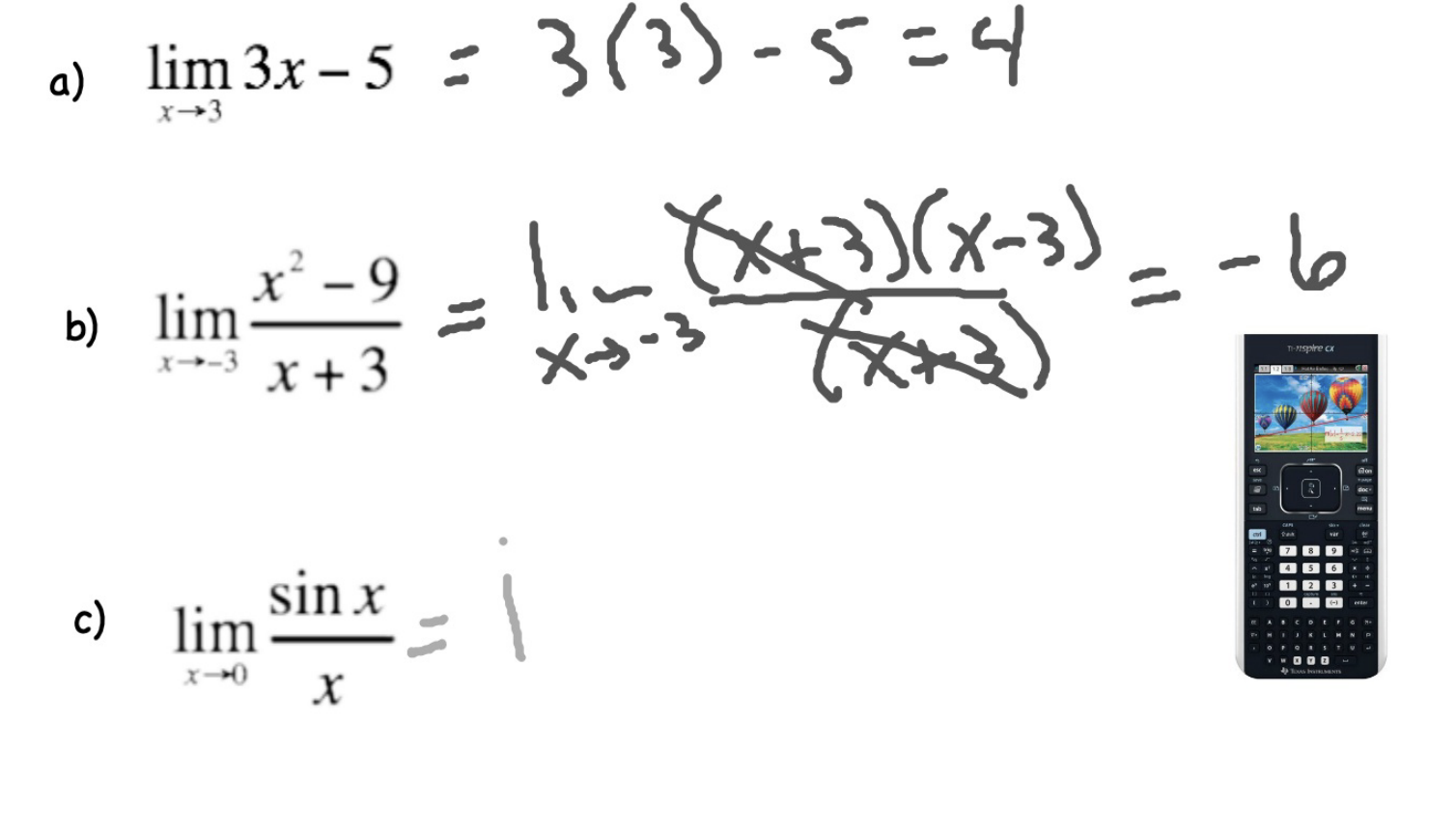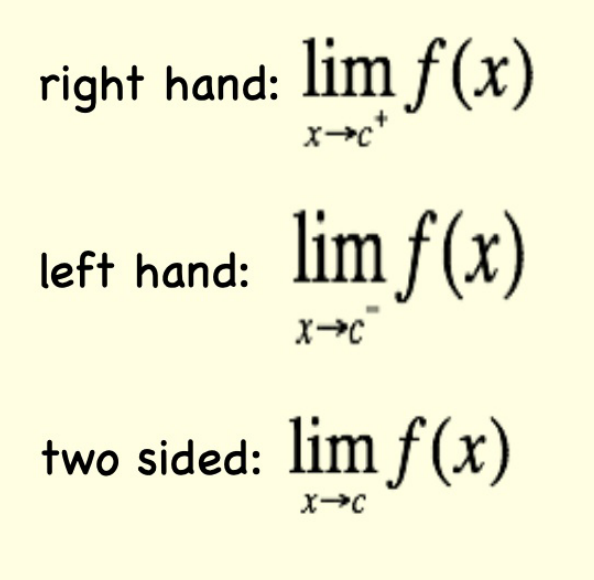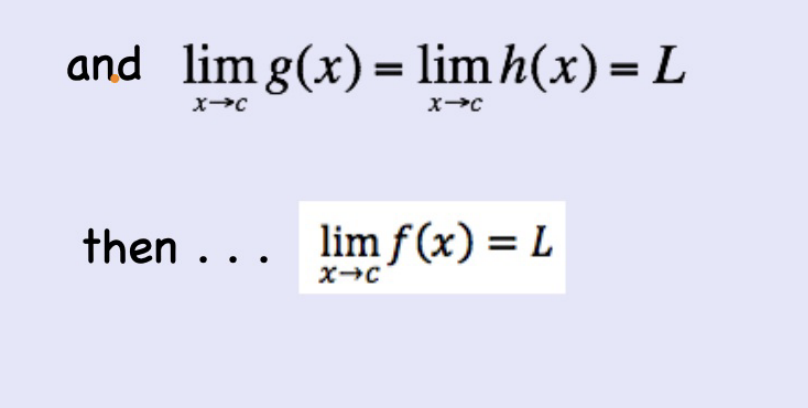
introduction to limits
limits
the concept of limits is one of the major ideas which distinguishes calculus from lower math courses, such as algebra and geometry
limits give us language for describing how the outputs of a function behave as the inputs approach a particular value
limit equation:
 four tools exist for evaluating limits:
four tools exist for evaluating limits:
substitution
graphing
numerical approximation (table)
algebra (analytical approach)
evaluating limits
practice problems

the existence of a limit as x approaches c (x → c) never depends on how the function may or may not be defined at c
theorem one: there are six basic facts about limits
sum rule: the limit of the sum of two functions equals the sum of the limits of two functions
difference rule: the limit of the difference of two functions equals the difference of the limits of two functions
product rule: the limit of a product of functions equals the product of the limit of each function
constant multiple rule: the limit of a constant multiple of a function equals the product of the constant with the limit of the function
quotient rule: the limit of a quotient of functions equals the quotient of the limit of each function
power rule: the limit of the nth power of a function equals the nth power of the limit of the function
limits may be evaluated through the use of conjugates
conjugate: change the sign (+ to −, or − to +) in the middle of two terms

one-sided limits and the sandwich theorem
f(x) = int x or [[x]]
one-sided limits

the sandwich theorem/the squeeze theorem
if g(x) ≤ f(x) ≤ h(x) for all things x ≠ c in some interval about c,

we “trap” f(x) between two functions of known limit at c; thus, f has the same limit
introduction to limits
limits
the concept of limits is one of the major ideas which distinguishes calculus from lower math courses, such as algebra and geometry
limits give us language for describing how the outputs of a function behave as the inputs approach a particular value
limit equation:
 four tools exist for evaluating limits:
four tools exist for evaluating limits:
substitution
graphing
numerical approximation (table)
algebra (analytical approach)
evaluating limits
practice problems

the existence of a limit as x approaches c (x → c) never depends on how the function may or may not be defined at c
theorem one: there are six basic facts about limits
sum rule: the limit of the sum of two functions equals the sum of the limits of two functions
difference rule: the limit of the difference of two functions equals the difference of the limits of two functions
product rule: the limit of a product of functions equals the product of the limit of each function
constant multiple rule: the limit of a constant multiple of a function equals the product of the constant with the limit of the function
quotient rule: the limit of a quotient of functions equals the quotient of the limit of each function
power rule: the limit of the nth power of a function equals the nth power of the limit of the function
limits may be evaluated through the use of conjugates
conjugate: change the sign (+ to −, or − to +) in the middle of two terms

one-sided limits and the sandwich theorem
f(x) = int x or [[x]]
one-sided limits

the sandwich theorem/the squeeze theorem
if g(x) ≤ f(x) ≤ h(x) for all things x ≠ c in some interval about c,

we “trap” f(x) between two functions of known limit at c; thus, f has the same limit
 Knowt
Knowt
